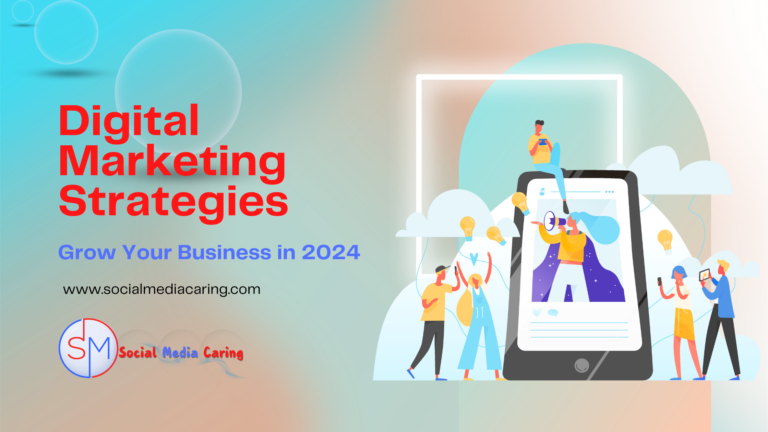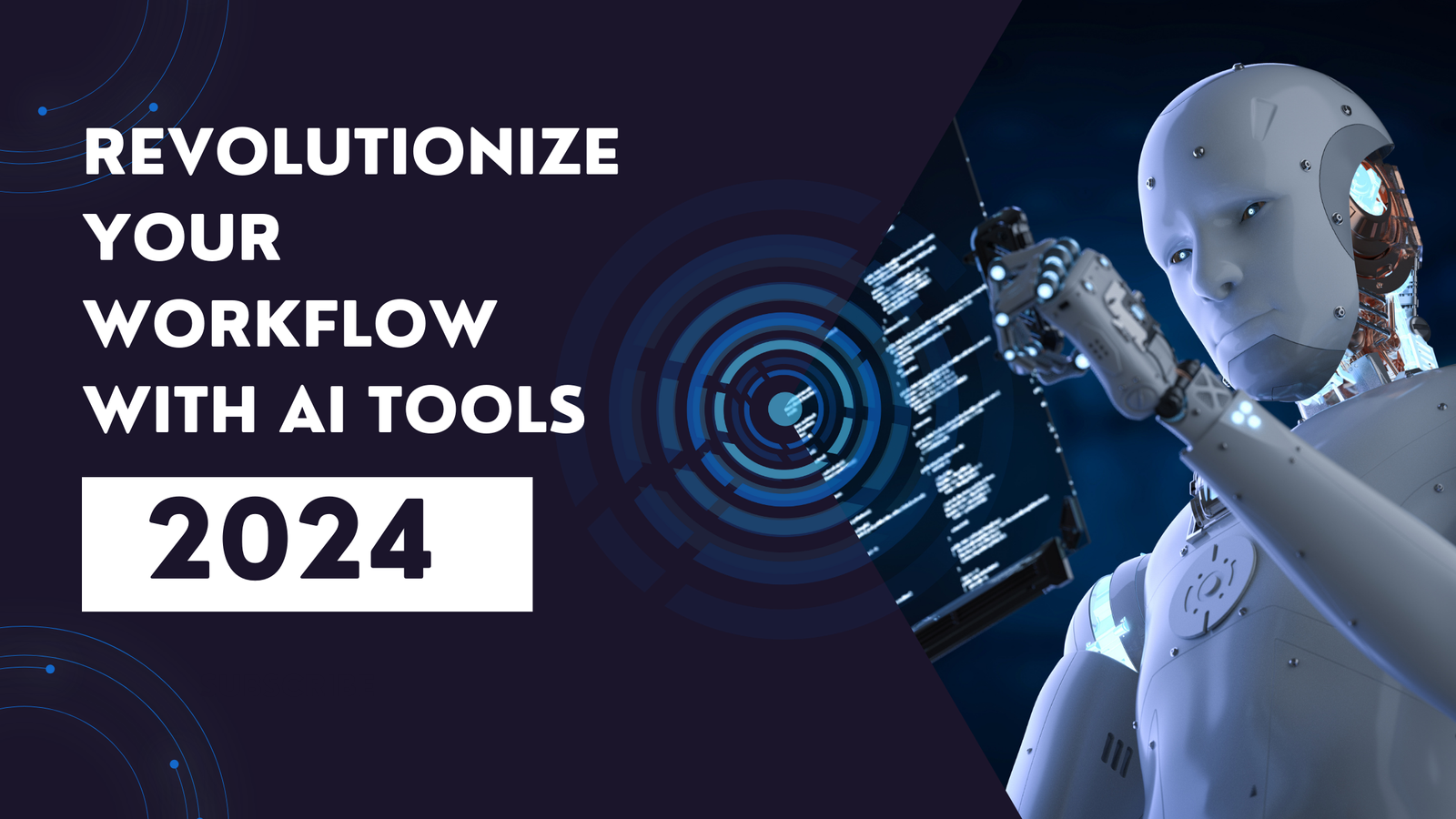
Table of Contents
ToggleTop Digital Marketing Strategies to Grow Your Business in 2024

📊 Are you ready to skyrocket your business growth in 2024? 🚀 The digital marketing landscape is evolving at breakneck speed, and staying ahead of the curve is no longer optional—it’s essential for success.
In an era where AI, voice search, and augmented reality are reshaping consumer experiences, traditional marketing strategies are quickly becoming obsolete. But don’t panic! We’ve got you covered with the top digital marketing strategies that will not only keep your business relevant but propel it to new heights in the coming year.
From leveraging cutting-edge AI-powered tools to embracing the power of video marketing and optimizing for voice search, we’ll explore nine game-changing strategies that are set to dominate the digital marketing sphere in 2024. So, buckle up and get ready to transform your marketing approach—your business growth depends on it!
Leverage AI-Powered Marketing Tools
In the rapidly evolving landscape of digital marketing, artificial intelligence (AI) has emerged as a game-changing technology that can significantly boost your business growth. As we delve into the world of AI-powered marketing tools, we’ll explore how these innovative solutions can revolutionize your marketing strategies and propel your business to new heights in 2024.

Use AI for Personalized Content Creation
One of the most impactful applications of AI in digital marketing is its ability to create highly personalized content at scale. This level of customization was once a time-consuming and resource-intensive process, but AI has made it both efficient and effective.
Benefits of AI-Driven Content Personalization
Increased engagement: Tailored content resonates more with audiences, leading to higher engagement rates.
Improved conversion rates: Personalized content can guide users through the sales funnel more effectively.
Enhanced customer experience: Users feel valued when they receive content that speaks directly to their interests and needs.
Time and resource efficiency: AI can generate personalized content much faster than human marketers alone.
AI Content Creation Tools and Techniques
Natural Language Processing (NLP) for text generation
Computer Vision for image and video personalization
Recommendation engines for personalized product suggestions
Dynamic email content based on user behavior and preferences
To illustrate the power of AI in content creation, let’s look at a comparison of traditional vs. AI-powered content personalization:
Aspect | Traditional Personalization | AI-Powered Personalization |
|---|---|---|
Scale | Limited by human capacity | Can handle millions of users |
Speed | Time-consuming | Near real-time personalization |
Accuracy | Prone to human error | Highly accurate based on data |
Complexity | Basic segmentation | Deep, multi-faceted personalization |
Cost | High labor costs | Initial investment, lower long-term costs |
Implementing AI-Driven Content Personalization
To leverage AI for personalized content creation:
Collect and analyze user data: Gather information on user preferences, behaviors, and interactions.
Choose the right AI tools: Select platforms that align with your content needs and marketing goals.
Create content templates: Develop flexible templates that AI can customize for individual users.
Test and refine: Continuously monitor performance and adjust your AI algorithms for better results.
By embracing AI-powered content creation, you can deliver highly relevant and engaging experiences to your audience, fostering stronger connections and driving business growth.
Optimize Ad Campaigns with Machine Learning

Machine learning, a subset of AI, has revolutionized the way businesses approach advertising. By leveraging machine learning algorithms, marketers can optimize their ad campaigns for maximum effectiveness and return on investment (ROI).
Key Benefits of Machine Learning in Advertising
Improved targeting: ML algorithms can identify the most receptive audiences for your ads.
Dynamic budget allocation: Automatically adjust spending across channels for optimal results.
Real-time optimization: Continuously refine ad performance based on live data.
Predictive bidding: Determine the optimal bid for ad placements to maximize ROI.
Machine Learning Applications in Ad Optimization
Audience Segmentation
Use ML to create highly specific audience segments based on behavior, demographics, and psychographics.
Tailor ad content and targeting to each segment for improved relevance and performance.
Ad Creative Optimization
Analyze historical performance data to predict which ad creatives will perform best.
Automatically generate and test multiple ad variations to find the most effective combinations.
Bidding Strategies
Implement ML-powered bidding algorithms that adjust in real-time based on market conditions and campaign goals.
Optimize bids across different platforms and ad formats simultaneously.
Cross-Channel Attribution
Use ML to accurately attribute conversions across multiple touchpoints and channels.
Gain insights into the customer journey to inform future campaign strategies.
Implementing Machine Learning in Your Ad Campaigns
To effectively leverage machine learning for ad optimization:
Set clear campaign objectives: Define specific, measurable goals for your advertising efforts.
Integrate data sources: Combine data from various platforms and channels for a comprehensive view.
Choose the right ML tools: Select platforms that offer robust machine learning capabilities aligned with your needs.
Start small and scale: Begin with a pilot project and gradually expand as you see positive results.
Continuously monitor and refine: Regularly review ML-driven insights and adjust your strategies accordingly.
By harnessing the power of machine learning, you can create more efficient, effective, and targeted ad campaigns that drive better results for your business.
Employ Predictive Analytics for Customer Insights

Predictive analytics is a powerful AI-driven tool that allows businesses to anticipate future trends, behaviors, and outcomes based on historical data. By leveraging predictive analytics, marketers can gain deep insights into customer behavior and preferences, enabling more informed decision-making and strategic planning.
Benefits of Predictive Analytics in Marketing
Anticipate customer needs: Forecast what products or services customers are likely to need or want in the future.
Reduce churn: Identify customers at risk of leaving and take proactive measures to retain them.
Optimize pricing: Determine the most effective pricing strategies based on market trends and customer behavior.
Improve inventory management: Predict demand fluctuations to optimize stock levels and reduce waste.
Key Applications of Predictive Analytics in Marketing
Customer Lifetime Value (CLV) Prediction
Estimate the total value a customer will bring to your business over their entire relationship.
Prioritize high-value customers and tailor marketing efforts accordingly.
Churn Prediction and Prevention
Identify customers who are likely to stop using your product or service.
Implement targeted retention strategies to keep at-risk customers engaged.
Next Best Action (NBA) Modeling
Determine the most effective next step in customer interactions.
Personalize marketing messages and offers based on individual customer journeys.
Demand Forecasting
Predict future demand for products or services based on historical data and market trends.
Optimize inventory, production, and marketing efforts to meet anticipated demand.
Implementing Predictive Analytics in Your Marketing Strategy
To effectively leverage predictive analytics for customer insights:
Define clear objectives: Identify specific business problems you want to address with predictive analytics.
Gather and clean data: Collect relevant data from various sources and ensure its quality and consistency.
Choose appropriate models: Select predictive models that align with your objectives and data types.
Test and validate: Rigorously test your predictive models to ensure accuracy and reliability.
Integrate insights into action: Develop processes to translate predictive insights into actionable marketing strategies.
Continuously refine: Regularly update your models with new data and adjust your approach based on results.
By employing predictive analytics, you can gain a competitive edge by anticipating customer needs and market trends, allowing you to make data-driven decisions that drive business growth.
Implement Chatbots for Customer Service

Chatbots have become an integral part of modern customer service strategies, offering businesses a way to provide instant, 24/7 support while reducing operational costs. AI-powered chatbots can handle a wide range of customer inquiries, freeing up human agents to focus on more complex issues and improving overall customer satisfaction.
Benefits of AI Chatbots in Customer Service
24/7 availability: Provide round-the-clock support without the need for human agents.
Instant responses: Reduce wait times and provide immediate answers to common questions.
Scalability: Handle multiple conversations simultaneously, even during peak periods.
Consistency: Deliver uniform responses and adhere to brand guidelines across all interactions.
Cost-efficiency: Reduce the need for large customer service teams, especially for routine inquiries.
Key Features of AI-Powered Chatbots
Natural Language Processing (NLP)
Understand and interpret customer queries in natural language.
Provide contextually appropriate responses based on the conversation flow.
Machine Learning Capabilities
Improve responses over time based on interactions and feedback.
Adapt to new scenarios and customer needs without manual reprogramming.
Multi-Channel Integration
Seamlessly operate across various platforms (website, mobile app, social media).
Provide consistent experiences regardless of the channel used.
Sentiment Analysis
Detect customer emotions and adjust responses accordingly.
Escalate to human agents when negative sentiment is detected.
Personalization
Access customer data to provide personalized recommendations and solutions.
Remember past interactions for context in future conversations.
Implementing AI Chatbots in Your Customer Service Strategy
To effectively leverage AI chatbots for customer service:
Identify use cases: Determine which types of customer inquiries are best suited for chatbot handling.
Choose the right platform: Select a chatbot platform that aligns with your business needs and integrates with your existing systems.
Design conversation flows: Create logical, user-friendly conversation paths that address common customer needs.
Train your chatbot: Provide a comprehensive knowledge base and train the AI on your specific products, services, and policies.
Implement human handoff: Establish clear criteria for when a chatbot should transfer the conversation to a human agent.
Monitor and optimize: Regularly review chatbot performance, customer feedback, and conversation logs to improve the system.
Best Practices for Chatbot Implementation
Be transparent: Clearly communicate to customers that they are interacting with a chatbot.
Provide options: Allow users to easily switch to human support if needed.
Personalize interactions: Use customer data to tailor responses and recommendations.
Keep it simple: Start with handling basic queries and gradually expand capabilities.
Maintain brand voice: Ensure the chatbot’s language and tone align with your brand identity.
By implementing AI-powered chatbots, you can significantly enhance your customer service capabilities, providing fast, efficient, and personalized support that contributes to overall customer satisfaction and loyalty.
Conclusion
As we’ve explored, leveraging AI-powered marketing tools offers numerous benefits for businesses looking to grow in 2024. From personalized content creation to optimized ad campaigns, predictive analytics, and efficient customer service, AI technologies provide powerful solutions to enhance your marketing strategies.
By embracing these AI-driven approaches, you can gain a competitive edge, improve customer experiences, and drive significant business growth. As you move forward with implementing these strategies, remember to start with clear objectives, choose the right tools, and continuously refine your approach based on data and results.
Now that we’ve covered the potential of AI in marketing, let’s explore another crucial strategy for digital marketing success in 2024: embracing video marketing. This dynamic medium offers unique opportunities to engage your audience and convey your brand message in compelling ways.




